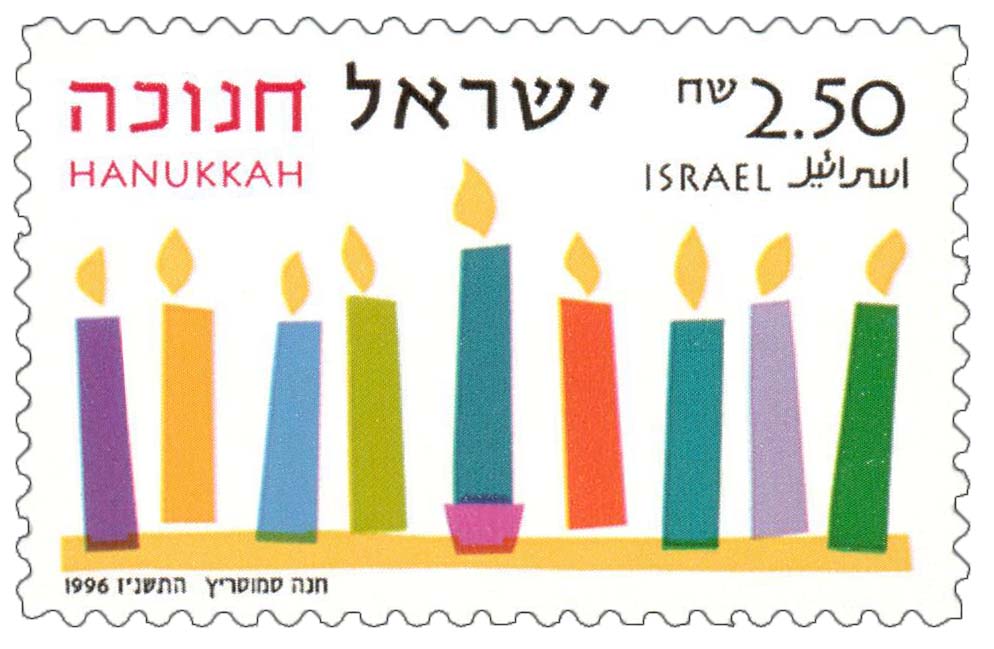
# 5142 - 2016 First-Class Forever Stamp - Diwali
Diwali is a traditional Hindu festival representing the triumph of good over evil, light over darkness, knowledge over ignorance, and hope over despair. The festival lasts for five days between mid-October and November with the third day of the festival falling on the darkest night of the lunar calendar – the night of the new moon.
The first two days of Diwali are spent cleaning and decorating. One tradition includes creating intricate – and sometimes colorful – designs on the floor. These are called rangoli and are made of rice, sand, flowers, and other items. Customarily, they are drawn by women and symbolize good luck.
Diwali is also known as the “festival of lights.” Its main celebration is on the third day and is called Lakshmi Puja. This festival day is a spectacular event. People place millions of diyas (small oil lamps made of clay) in their homes, hang strings of lights from rooftops, and set off brilliant fireworks displays. Families eat, exchange gifts, and offer prayers to Lakshmi, the goddess of prosperity, as it is believed she roams the Earth on this night.
Many countries around the world now hold events for Diwali. In doing so, the people of these nations have started to learn about the holiday – mirroring Diwali’s celebration of knowledge over ignorance.
Printed by: Ashton Potter Ltd.
Method: Offset, Microprint
Self-Adhesive
Holiday Celebrations Series
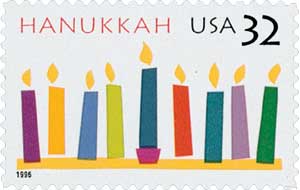
On October 22, 1996, the USPS issued its first stamp honoring Hanukkah, which was also the first stamp in the Holiday Celebrations Series.
The US has issued Christmas stamps since 1962. Over time, two series developed – Contemporary Christmas and Traditional Christmas. While the Contemporary Christmas stamps feature images of modern celebrations such as Christmas trees and Santa, Traditional Christmas stamps depict the Madonna and Child, the Holy Family, and angels.

For many years, postal customers called for a Hanukkah stamp. Hanukkah (Festival of Lights) is a celebration of a miracle that occurred at the Temple of Jerusalem in 165 BC when the Maccabees revolted against Syrian King Antiochus IV. The temple was reclaimed, but only enough purified oil was on hand to keep its light burning for one night. However, the lamp burned for eight days allowing the Maccabees time to purify more oil. Since that time, Jewish people celebrate the “Festival of Lights” each year for eight days.

The USPS finally answered calls for a Hanukkah stamp in 1996. The stamp would be the first US issue to recognize a Jewish holiday and was also a joint issue with Israel. Issued on October 22, 1996, the Hanukkah stamps of the US and Israel featured the same designs, though the US stamp used the English spelling of Hanukkah, while the Israel stamp also included the Hebrew spelling. The Israel stamp was also that nation’s first self-adhesive.
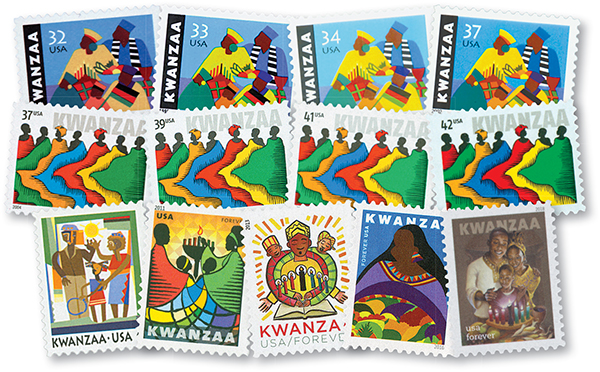
The Hanukkah stamp was also the start of the USPS’s new Holiday Celebrations Series, which sought to honor a different cultural or ethnic holiday every year. The second stamp in the series came exactly a year after the first. It honored Kwanzaa, an African-American holiday based on the traditional African harvest festival. The name for the seven-day festival means “first fruits” in Swahili.

The third stamp in the series was a joint issue with Mexico in 1998. It celebrates the Mexican holiday Cinco de Mayo, which means “May 5th.” This holiday is held on the anniversary of the victory of the Battle of Puebla, fought between Mexican and French troops over war debts on May 5, 1862. Click here for more about Cinco de Mayo as well as some neat First Day Covers.
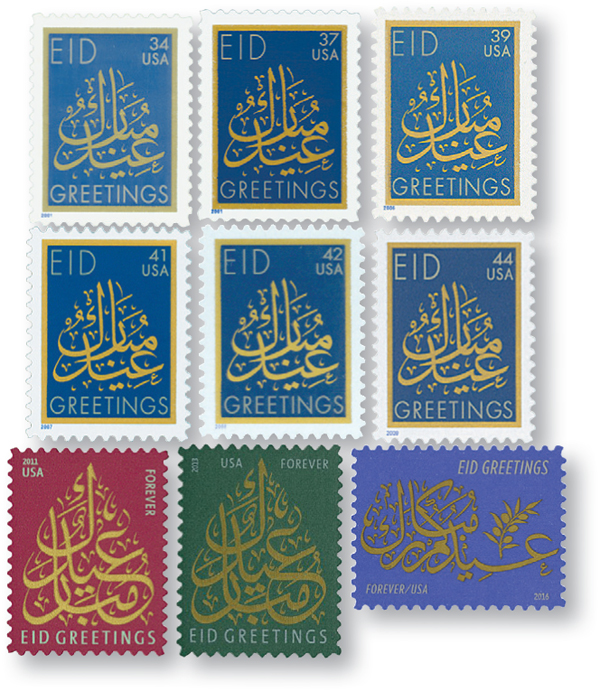
In 2001, the USPS issued its first Eid stamp. Eid is a joyous festival for Muslims, followers of Islam. “Eid al-Fitr” is the celebration that ends the month-long fast of Ramadan. The stamp has the appearance of a holiday greeting card, with “Eid Mubarak,” or “blessed festival,” written in elegant Arabic calligraphy. There are six million Muslims in the United States and over one billion worldwide.
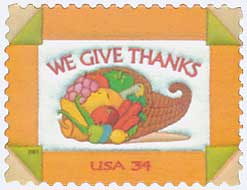
Also in 2001, the USPS issued its first stamp to honor Thanksgiving. The stamp recalled both historic stories of America’s “First Thanksgiving” and more recent memories of traditional family gatherings. A quilted cornucopia pattern on the stamp symbolizes an abundant harvest and the promise of future prosperity. A set of four Thanksgiving stamps was also issued in 2009 – US #4417-20.
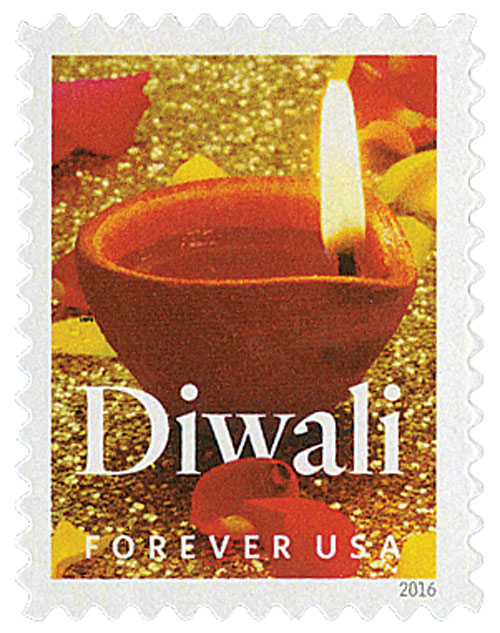
In 2016, stamps honoring two more holidays were added to the series. One featured Diwali, a traditional Hindu festival representing the triumph of good over evil, light over darkness, knowledge over ignorance, and hope over despair. The festival lasts for five days between mid-October and November with the third day of the festival falling on the darkest night of the lunar calendar – the night of the new moon. The other 2016 issue added to the series featured Jack-o-Lanterns, for Halloween.
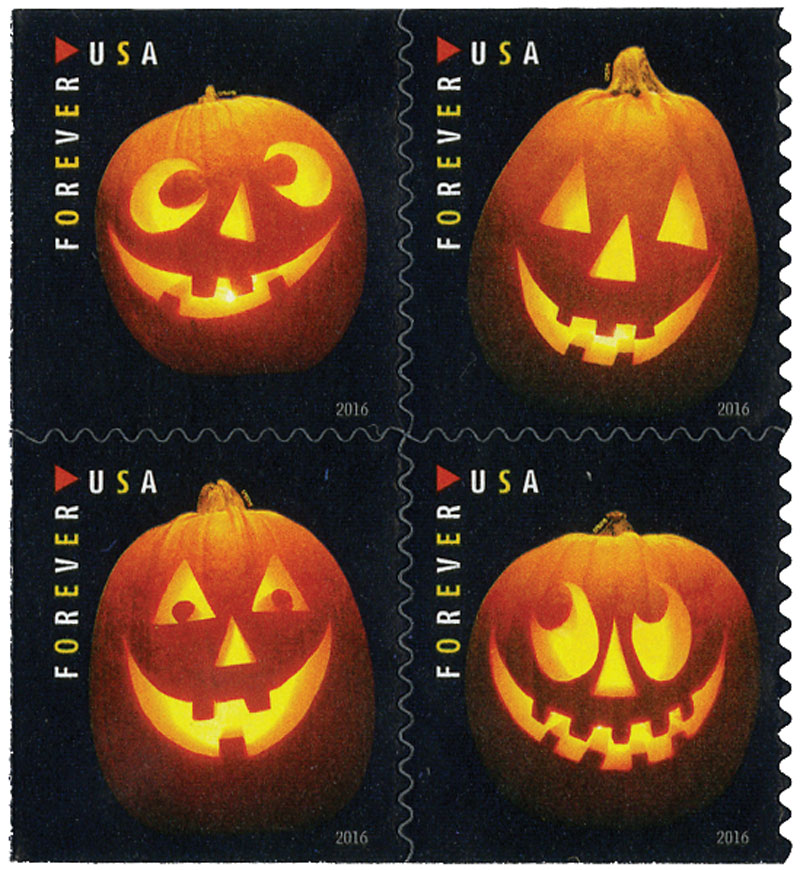
Over the years, the USPS has re-issued some of these Holiday Celebrations stamps with updated denominations, as well as some with new designs.
In 2018, the US and Isreal collaborated again on a joint issue honoring Hanukkah. You can get both stamps here.
Diwali is a traditional Hindu festival representing the triumph of good over evil, light over darkness, knowledge over ignorance, and hope over despair. The festival lasts for five days between mid-October and November with the third day of the festival falling on the darkest night of the lunar calendar – the night of the new moon.
The first two days of Diwali are spent cleaning and decorating. One tradition includes creating intricate – and sometimes colorful – designs on the floor. These are called rangoli and are made of rice, sand, flowers, and other items. Customarily, they are drawn by women and symbolize good luck.
Diwali is also known as the “festival of lights.” Its main celebration is on the third day and is called Lakshmi Puja. This festival day is a spectacular event. People place millions of diyas (small oil lamps made of clay) in their homes, hang strings of lights from rooftops, and set off brilliant fireworks displays. Families eat, exchange gifts, and offer prayers to Lakshmi, the goddess of prosperity, as it is believed she roams the Earth on this night.
Many countries around the world now hold events for Diwali. In doing so, the people of these nations have started to learn about the holiday – mirroring Diwali’s celebration of knowledge over ignorance.
Printed by: Ashton Potter Ltd.
Method: Offset, Microprint
Self-Adhesive
Holiday Celebrations Series

On October 22, 1996, the USPS issued its first stamp honoring Hanukkah, which was also the first stamp in the Holiday Celebrations Series.
The US has issued Christmas stamps since 1962. Over time, two series developed – Contemporary Christmas and Traditional Christmas. While the Contemporary Christmas stamps feature images of modern celebrations such as Christmas trees and Santa, Traditional Christmas stamps depict the Madonna and Child, the Holy Family, and angels.

For many years, postal customers called for a Hanukkah stamp. Hanukkah (Festival of Lights) is a celebration of a miracle that occurred at the Temple of Jerusalem in 165 BC when the Maccabees revolted against Syrian King Antiochus IV. The temple was reclaimed, but only enough purified oil was on hand to keep its light burning for one night. However, the lamp burned for eight days allowing the Maccabees time to purify more oil. Since that time, Jewish people celebrate the “Festival of Lights” each year for eight days.

The USPS finally answered calls for a Hanukkah stamp in 1996. The stamp would be the first US issue to recognize a Jewish holiday and was also a joint issue with Israel. Issued on October 22, 1996, the Hanukkah stamps of the US and Israel featured the same designs, though the US stamp used the English spelling of Hanukkah, while the Israel stamp also included the Hebrew spelling. The Israel stamp was also that nation’s first self-adhesive.

The Hanukkah stamp was also the start of the USPS’s new Holiday Celebrations Series, which sought to honor a different cultural or ethnic holiday every year. The second stamp in the series came exactly a year after the first. It honored Kwanzaa, an African-American holiday based on the traditional African harvest festival. The name for the seven-day festival means “first fruits” in Swahili.

The third stamp in the series was a joint issue with Mexico in 1998. It celebrates the Mexican holiday Cinco de Mayo, which means “May 5th.” This holiday is held on the anniversary of the victory of the Battle of Puebla, fought between Mexican and French troops over war debts on May 5, 1862. Click here for more about Cinco de Mayo as well as some neat First Day Covers.

In 2001, the USPS issued its first Eid stamp. Eid is a joyous festival for Muslims, followers of Islam. “Eid al-Fitr” is the celebration that ends the month-long fast of Ramadan. The stamp has the appearance of a holiday greeting card, with “Eid Mubarak,” or “blessed festival,” written in elegant Arabic calligraphy. There are six million Muslims in the United States and over one billion worldwide.

Also in 2001, the USPS issued its first stamp to honor Thanksgiving. The stamp recalled both historic stories of America’s “First Thanksgiving” and more recent memories of traditional family gatherings. A quilted cornucopia pattern on the stamp symbolizes an abundant harvest and the promise of future prosperity. A set of four Thanksgiving stamps was also issued in 2009 – US #4417-20.

In 2016, stamps honoring two more holidays were added to the series. One featured Diwali, a traditional Hindu festival representing the triumph of good over evil, light over darkness, knowledge over ignorance, and hope over despair. The festival lasts for five days between mid-October and November with the third day of the festival falling on the darkest night of the lunar calendar – the night of the new moon. The other 2016 issue added to the series featured Jack-o-Lanterns, for Halloween.

Over the years, the USPS has re-issued some of these Holiday Celebrations stamps with updated denominations, as well as some with new designs.
In 2018, the US and Isreal collaborated again on a joint issue honoring Hanukkah. You can get both stamps here.













